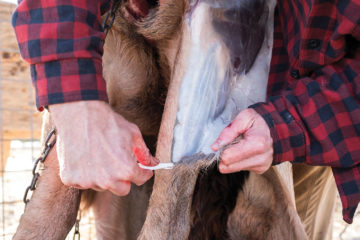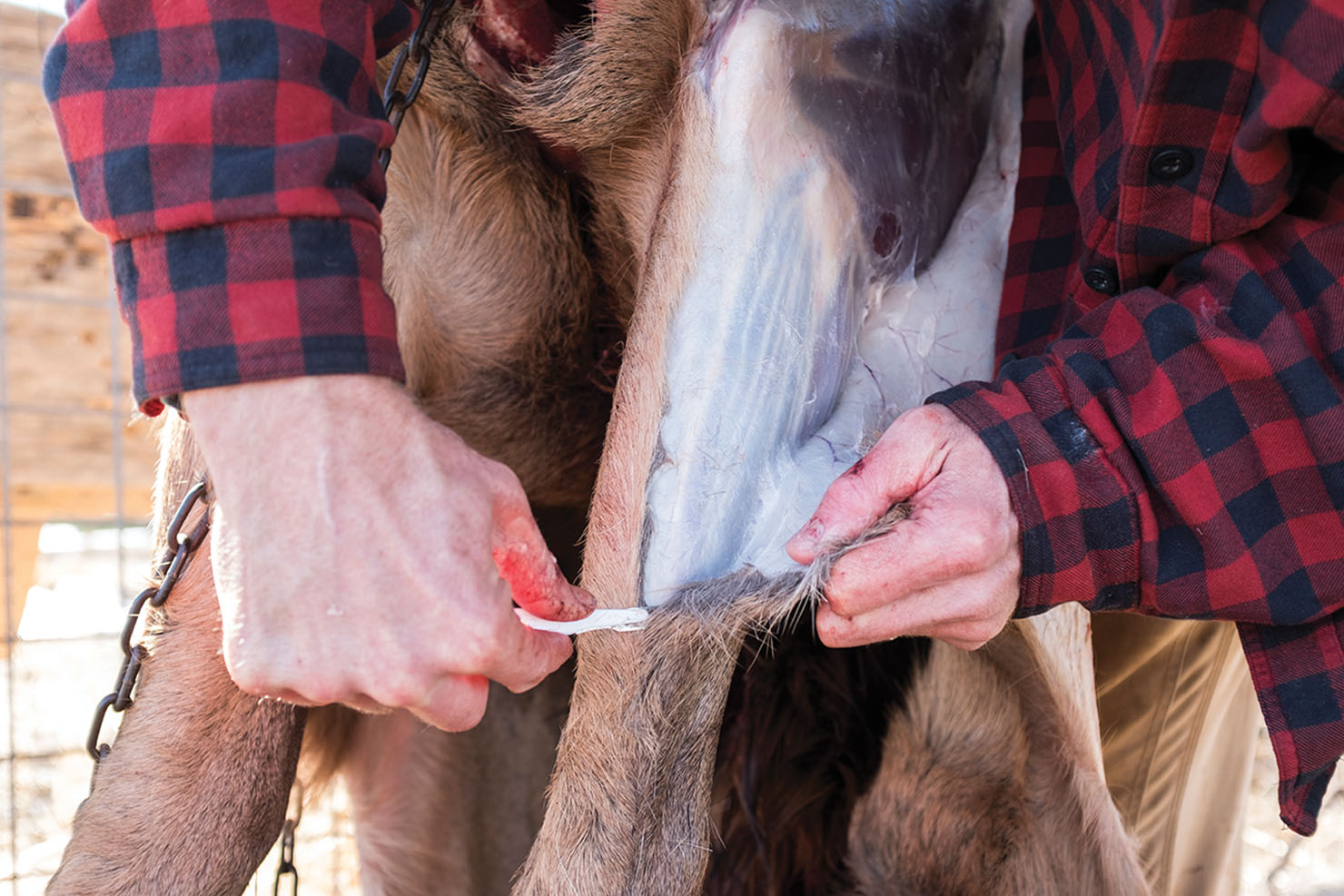As the hunting season progresses each fall, the Southern Ute Wildlife Division takes calls from tribal members requesting designated hunting services from the Wildlife Division as a way to fill their freezers with game meat for the long winter. Per the Wildlife Conservation Code (Title 13), during the fall hunting season tribal member elders, single women or those with disabilities can designate either another tribal member, or they can designate the Wildlife Division to harvest their doe mule deer, cow elk or wild turkeys of either sex.
The designated hunting service by the Wildlife Division has grown in popularity over the years; fifteen years ago, the Wildlife Division received just a handful of requests each fall, but in 2018 there were 18 requests received. Wildlife Division staff Aran Johnson and Danielle Austin are tasked with filling these orders and they take their job very seriously.
“Over the years Danielle and I have developed relationships with many of the tribal members making these requests. They rely on us to harvest their animals, dress and skin them and to either deliver them to their home or to a processor,” Johnson explained. “They trust us to fill their requests and we do our absolute best to make sure everyone receives what they asked for. We are proud to be able to help the membership with these important requests. We have seen this program grow over the years and take that as a sign that we are doing a good job. We see a lot of repeat customers.”

November and December get very busy with designated hunting for Johnson and Austin. Deer hunting picks up in November and elk hunting in December. These months match up to peak migration times for the animals and allow for the most efficient time in the field. While harvesting doe mule deer is straightforward during any given year, weather dictates how smoothly the designated elk hunts go.
“If we get snow starting to accumulate down to about eight thousand feet in late November and early December we know that we’ll see large herds of elk migrating onto tribal lands, which in turn makes filling our cow elk requests much easier,” Johnson said. “The 2017-2018 winter was so dry that very few elk made it down to the reservation by the time the general season ended. Years like that make things more difficult, but it just means we have to work that much harder to make sure the requests are filled and we do that.”
After harvest, the animals are brought back to Ignacio and skinned and then the carcasses are delivered.
“We’ve always felt it’s important to give the requesting tribal member the best service possible,” emphasized Johnson. “Some people like to have the animal delivered right to their home, in other cases we will bring the animals to the processor of their choice. Either way we like to skin the animals for them. It puts more work on our shoulders, but it helps people who might not physically be able to skin their own animal, and overall it saves the tribal member time and money. The processor can charge quite a bit to skin a deer or elk, and those costs add up.”
Each year the Wildlife Division accumulates deer and elk hides from the designated hunts. They are salted and dried with hair-on. “Some people request their deer and elk hides and we are happy to provide those. For those hides left over we try to get the word out to the membership that hides are available. They would be great for tanning and traditional clothing and craft projects, or for things like hand drums. If a tribal member is interested in obtaining deer or elk hides, I would encourage them to give our office a call. During this year’s hunting season, we had a tribal member request not just hides, but also brains so that they could do their own tanning. We are happy to fill those requests as well, with lead time.”
With the popularity of the designating hunting service increasing, it’s important to get requests in early. Requests are put on a list and the animals are harvested in order. It is possible if a request is made too late in the season that it will not be filled. To request designated hunting services from the Wildlife Division, a tribal member must be either an elder, a single woman or have a disability. Please stop by the Wildlife office in the Annex Building, or call the office at 970-563-0130 for more information.






